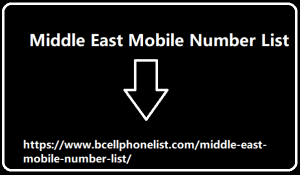|
|
Buffer or Hootsuite: Social media management tools that help you schedule posts, track engagement metrics, and manage multiple social media accounts. BuzzSumo: Allows you to search for viral content and identify influencers relevant to your industry. MailChimp or SendGrid: Email marketing automation platforms that help you create effective email campaigns. Google Data Studio: A free tool that lets you create custom reports to visualize and share data from multiple sources. Metrics Conversion Rate: Measures the percentage of visitors who take a desired action, such as signing up for a newsletter, filling out a form, or making a purchase.
Retention Rate: Evaluates how many users continue to use your product or service over time, which is essential for sustainable growth. Cost per Acquisition (CAC): Calculates the average cost of acquiring a new customer, taking into account marketing and sales Middle East Mobile Number List expenses. Customer Lifetime Value (LTV): Estimates the total value a customer will bring to the company during the time they remain a customer. Click-Through Rate (CTR): Measures how many people click on a specific link, such as an ad or an email link. Churn Rate: Refers to the rate at which customers or users cancel over time.

Virility (Viral Coefficient): referrals or shares from existing customers. Average Time on Page: Indicates how long visitors spend on a page, which can be an indicator of engagement. Opening Rate and Click-Through Rate in Emails (Email Open Rate and Click-Through Rate): Measure the performance of email marketing campaigns. Customer Satisfaction Index (NPS): A metric that measures customers' satisfaction and their likelihood of recommending your product or service. What is the relationship between Growth Hacking and Digital Marketing and how the two areas work in synergy to generate results Growth Hacking and Digital Marketing are two interconnected disciplines that share common goals of expansion and generating results, but differ in their approach and tactics.
|
|